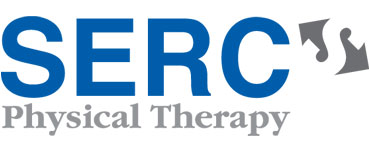Darla M. Wilson, PT, DPT (Undergraduate Minor in Music Performance) – Austintown, OH Center
Whether you are a professional musician, a music student, or just like to break out your guitar rendition of “Free Bird” at parties, you probably have realized that playing an instrument can be physically demanding. In fact, as many as 80 percent of professional musicians suffer from playing-related pain. Perhaps the most alarming fact is that many musicians see pain as a normal and expected part of playing.
Sounding your best requires fine motor skills, control and finesse. Don’t let pain keep you from nailing a performance, winning your audition, or impressing your friends. Here are recommendations for avoiding playing-related injuries:
Have a routine
- Five minute warm-up: Try full-body active movements with large muscle groups. Then move through full ranges of motion with your most involved joints (shoulders, neck, wrists, fingers).
- Specific warm-up: This can include scales or drills. Good technique can reduce risk of pain.
- During practice: Take frequent, short breaks including posture changes and moving your joints through full ranges of motion to avoid fatigue and improve circulation.
- Five minute cool-down: This should include slow, gentle, pain-free stretching of your most involved muscles, holding each for 30 seconds.
Make a plan
- Develop a consistent practice schedule versus sporadic marathon sessions.
- Try steady increases in practice duration each day before important performances.
Stay in shape
Being in good physical condition can help decrease the risk of pain. Try a few of these exercises to get started:
- Chin tuck/head lift – Helps support head and neck during prolonged postures
- Lie on your back and pull your chin straight backward toward the pillow.
- Hold this tucked position while slightly lifting your head off the pillow.
- Hold position to fatigue or until you are unable to maintain the tuck.
- Do not lift too high or you will use the wrong muscles.
- Core breathing – Helps to activate proper muscles for breath control for wind and brass instruments and builds a foundation for posture.
- Lie on your back with your knees bent.
- Take deep breaths, filling your abdomen with air instead of your rib cage.
- While breathing out, focus on exhaling completely, bringing ribs toward hips and gently contracting abdomen.
- Shoulder ABCs – Helps prevent upper back and shoulder pain. Can help increase hand strength and dexterity.
- Sit with good posture: Ear in line with tip of shoulder, tip of shoulder in line with hips, shoulder blades squeezed back toward spine and slightly downward.
- Extend both arms straight
- Holding shoulder blades down and back, draw letters of the alphabet in the air with both arms. Increase difficulty by sitting on a ball.
Keep in mind that the best prevention plan involves early awareness and treatment. Also, each instrument requires varying postures and movements. For an individualized exercise plan, seek advice from a physical therapist.
